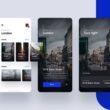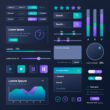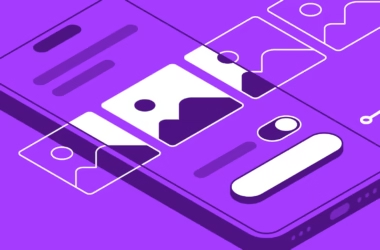If you’ve ever designed an app or built a website, you’ve probably come across terms like design systems and UI kits. These tools may sound similar, but they serve different purposes in the design world. In this guide, we’ll explore Design Systems vs. UI Kits, what sets them apart, and how to use them effectively, even if you’re just getting started.
What Are Design Systems?
To understand Design Systems vs. UI Kits, let’s first look at what a design system actually is. A design system is a comprehensive set of standards, styles, components, and documentation that helps teams create consistent and scalable digital products.
Instead of starting from scratch every time, designers and developers rely on the design system as a “single source of truth.” It defines everything from typography and color palettes to how a button should behave when clicked.
Examples of Popular Design Systems:
- Material Design – Created by Google, it includes detailed rules on motion, layout, and component behavior.
- Carbon Design System – IBM’s system for building digital products with a consistent user experience.
- Lightning Design System – Salesforce’s UI framework with tokens, patterns, and accessibility tools.
- Polaris – Shopify’s design system is tailored to e-commerce user experiences.
These design systems guide entire teams, ensuring that every product feels cohesive, no matter who designs it.
What Are UI Kits?
Next, in the Design Systems vs. UI Kits conversation, let’s talk about UI kits. A UI kit is a collection of pre-designed visual components—such as buttons, icons, checkboxes, and modals—that you can plug into your design projects. Unlike design systems, UI kits don’t contain rules or documentation; they’re meant to speed up the visual side of your work.
A UI Kit Typically Includes:
- Buttons and icon sets
- Text fields and dropdowns
- Sliders, modals, and pop-ups
- Cards, containers, and tabs
For instance, a beginner working in Figma can download a Material UI kit with drag-and-drop elements, helping them create polished mockups without knowing all the design system rules.
Design Systems vs. UI Kits: What’s the Real Difference?
Now that you’ve seen both terms in action, let’s compare them directly to understand the differences in Design Systems vs. UI Kits:
| Feature | Design System | UI Kit |
|---|---|---|
| Purpose | Guides full product design | Speeds up visual design |
| Includes | Rules, styles, behavior, components | Buttons, icons, modals, and inputs |
| Target Audience | Product teams, developers, designers | Designers (especially for mockups) |
| Example | Google’s Material Design, IBM Carbon | Figma Material Kit, iOS UI Kit |
| Best For | Long-term product growth | Rapid prototyping and MVPs |
In short, think of a design system as the full cookbook, while a UI kit is the ingredients already prepped and ready to use.
When Should You Use a Design System or a UI Kit?
It depends on your goal:
- Use a design system when you’re building or scaling a product with multiple pages, features, or team members.
- Use a UI kit when you’re rapidly prototyping an idea, building a quick project, or just starting and need ready-made assets.
Often, designers use both together, grabbing components from a UI kit that follow the rules set by their design system.
Final Thoughts: Design Systems vs. UI Kits
Understanding Design Systems vs. UI Kits is essential for any beginner looking to create consistent, beautiful, and functional digital products. While UI kits help you move fast with ready-made visuals, design systems ensure long-term consistency, accessibility, and scalability.
If you’re just starting your journey as a designer, use UI kits to practice and experiment. As you grow and join bigger projects or teams, learning how to use and contribute to a design system will take your skills to the next level.
In the end, knowing when and how to use Design Systems vs. UI Kits will make your workflow smoother and your designs more professional.
If you found this article helpful, you might also want to check out “Understanding Task Flows & How to Create Flows“, where we break down how to create simple yet effective task flows for better user experience design.











1 comment